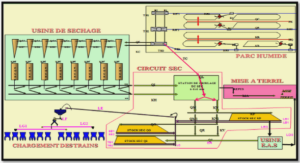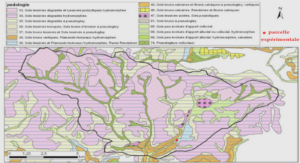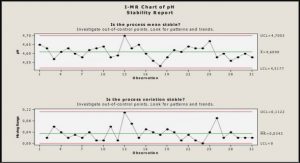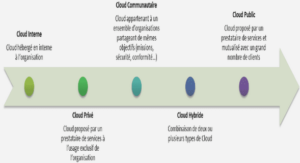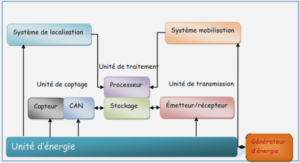Flexible Manufacturing System (FMS) design
Advantages and disadvantages of using FMS
There are lots of advantages for using a flexible manufacturing system with respect to a nonflexible one such as the reduction of the setup time and production time, the diversity of the production types, the amelioration of the quality of the products, etc. On the other hand, these systems suffer as well from some disadvantages since they have sophisticated designs, they are relatively expensive etc. (Luggen, 1991).
Problematics
When establishing a new flexible manufacturing system or upgrading an existing one, an enterprise has to take into account the machines to select for this purpose. Such a selection is directly related to the nature of the products to manufacture as well as to the production volumes and costs. In addition, the configuration of the system has to be studied together with the estimated revenues and expenses in order to know whether the system is profitable or not. On the other hand, the manufacturing enterprises which are manufacturing high volume customers’ demands need a decisional tool to help them decide whether they are able to accept a new fabrication request and whether such an acceptation is profitable. This is because the implementation of the new command may require a partial reconfiguration of the system. As can be obviously seen, all of these subjects directly influence and are directly influenced by the design of the system. In fact, the design of the FMS is a critical step since a random machine-part cell arrangement may cause production conflicts as well as higher costs and processing durations. On the other hand, the number of machines and parts which may be found in a FMS is not fix and consequently, we have an unlimited number of different sizes of the system (hence of the incidence matrix). Furthermore, the number of non-zero and that of zero entries within the incidence matrix are not constant and their distributions are various since each matrix represents a different system. In other words, we are dealing with an infinite number of possibilities and there is no a precise mathematical formula which can provide optimal solutions for all of these possibilities. In addition, the limitations of the processors’ speeds of the computers constitute a major obstacle for finding all the possible configurations within a single incidence matrix. For instance, a matrix consisting of only twenty rows and forty columns contains a huge number of possible configurations which is equivalent to factorial (20) multiplied by factorial (40). This is because every swapping of any two rows or any two columns results in a new configuration. A recent computer with high computational capabilities may need billions of years in order to provide all the configurations for such a matrix. On the other hand, any methodology that will be developed in order to optimize the design of these systems has also to take the processing costs into consideration in order to avoid the wastes.
Hypotheses and objectives
In order to become able to optimize the design of the manufacturing system, new methodologies/algorithms have to be developed while taking into account that:
• The processing needs for each work piece are known (i.e. we know if a certain part needs grinding and/or boring and/or welding etc.)
• A machine and/or a part can be assigned to a single flexible manufacturing cell
• The processing duration and cost for each of the parts on each of the machines can be determined
The new algorithms aim to:
• Provide optimal configurations that lead to an efficient design for the flexible manufacturing and fractional cells and to the elimination of the exceptional elements as much as possible
• Optimally route the parts while taking into consideration the economic aspects of the system
• Decrease the wastes and consequently increase the profits through a machine selection procedure for the enterprises which aim to implant a new FMS or to upgrade an existing one. What is mainly meant by the upgrade of an existing one is the replacement the actual machines by new ones due to the increase of the customers’ demands
The New Pwavroid Solution Explorer Toolkit
A toolkit which is used for exploring candidate solutions is introduced in this paper. It contains 15 searching tools the majority of which are completely new (only the first 2 are taken from the literature). They behave in a diversified and periodic manner. These tools consist of interchanging 2 or more rows and/or columns.
The algorithm uses only one of them per iteration and after applying the 15th tool, it returns back to use the first one and so on. The main advantages of this toolkit are:
• It helps explore very quickly and efficiently the candidate solutions of the incidence matrix.
• It reduces greatly the time needed for finding the final solution. In a later section, a scatter chart is presented in order to shed the light on the importance of this toolkit.
• It can be bundled with any other algorithm that uses the swapping procedure in order to search for candidate solutions within the incidence matrix in the domain of flexible manufacturing systems.
The tools are explained as follows:
1- Swapping randomly 2 rows.
2- Swapping randomly 2 columns.
3- A combination of the first 2 tools (swapping randomly 2 rows and 2 columns).
4- If we have m rows, the 4th tool consists of swapping 2 rows per iteration in the following manner: at first, the 1st and the 2nd rows; thereafter, the 1st and the 3rd ones, and so forth until reaching the mth row. Afterward, the swapping procedure re-begins again but now with the 2nd row on one hand and the remaining rows on the other hand.
5- The same procedure of the 4th searching tool but, by using the columns instead of the rows.
6- A combination of the 4th and 5th tools.
7- Selecting randomly any 2 rows and swapping them inversely; thereafter, increasing the number of the selected rows by 1 and so forth. If we take as an example the selection of 4 rows such as the rows number 3, 4, 7 and 13; they will be inversely swapped in order to become arranged successively as follows: 13, 7, 4 and 3.
8- The same procedure of the 7th searching tool but, by using the columns instead of the rows.
9- A combination of the 7th and 8th tools.
Cell Formation
After applying the algorithm, a final configuration of the incidence matrix will be obtained in which, the nonzero entries are expected to get as close to each other as possible. The next step consists of creating only manufacturing cells by keeping in mind three rules:
• The greatest possible number of nonzero entries must be contained in the formed cells.
• Every machine and every part must be involved in a cell.
• A machine or a part cannot be assigned to more than one cell. In the cases where we obtain many exceptional elements in the final matrix configuration, a re-distribution of the cells may take place according to what follows:
• Creating manufacturing cells, each of which contains a certain number of machines and parts.
• Not all of the machines but all of the parts must be assigned to the manufacturing cells.
• A machine and/or a part cannot be assigned to more than one manufacturing cell.
• Creating one additional fractional cell that contains all of the parts in addition to only the machines which are not assigned to the manufacturing cells.
The nonzero entries, which are included in the manufacturing cells or in the fractional cell, are not considered as exceptional elements. That is why; the addition of the fractional cell may play a major role in reducing the number of these elements. The following section provides a better understanding of this process through two illustrative examples.
|
Table des matières
INTRODUCTION
CHAPTER 1 REVIEW OF THE LITERATURE
1.1 Introduction
1.2 Flexible Manufacturing System (FMS) design
1.3 Advantages and disadvantages of using FMS
1.4 Problematics
1.5 Hypotheses and objectives
1.6 Review of the literature
1.7 Conclusion
CHAPTER 2 MANUFACTURING AND FRACTIONAL CELL FORMATION USING A NEW BINARY DIGIT GROUPING ALGORITHM WITH A PWAVROID SOLUTION EXPLORER TOOLKIT
2.1 Abstract
2.2 Introduction
2.3 The binary digit grouping algorithm
2.4 The New Pwavroid Solution Explorer Toolkit
2.5 Cell Formation
2.6 Illustrative Examples
2.7 The advantages resulting from the application of the Pwavroid toolkit
2.8 Conclusion
CHAPTER 3 A TIME-COST HEURISTIC ALGORITHM FOR ROUTING THE PARTS IN A FLEXIBLE MANUFACTURING SYSTEM
3.1 Abstract
3.2 Introduction
3.3 The new algorithm
3.4 The innovation and the industrial importance provided by the new algorithm
3.5 A second numerical example
3.6 A review of the obtained results
3.7 Conclusion
CHAPTER 4 PROFIT MAXIMIZATION THROUGH A MACHINE SELECTION PROCEDURE IN A FLEXIBLE MANUFACTURING SYSTEM
4.1 Abstract
4.2 Introduction
4.3 The new algorithm
4.4 Conclusion
CONCLUSION
![]() Télécharger le rapport complet
Télécharger le rapport complet

